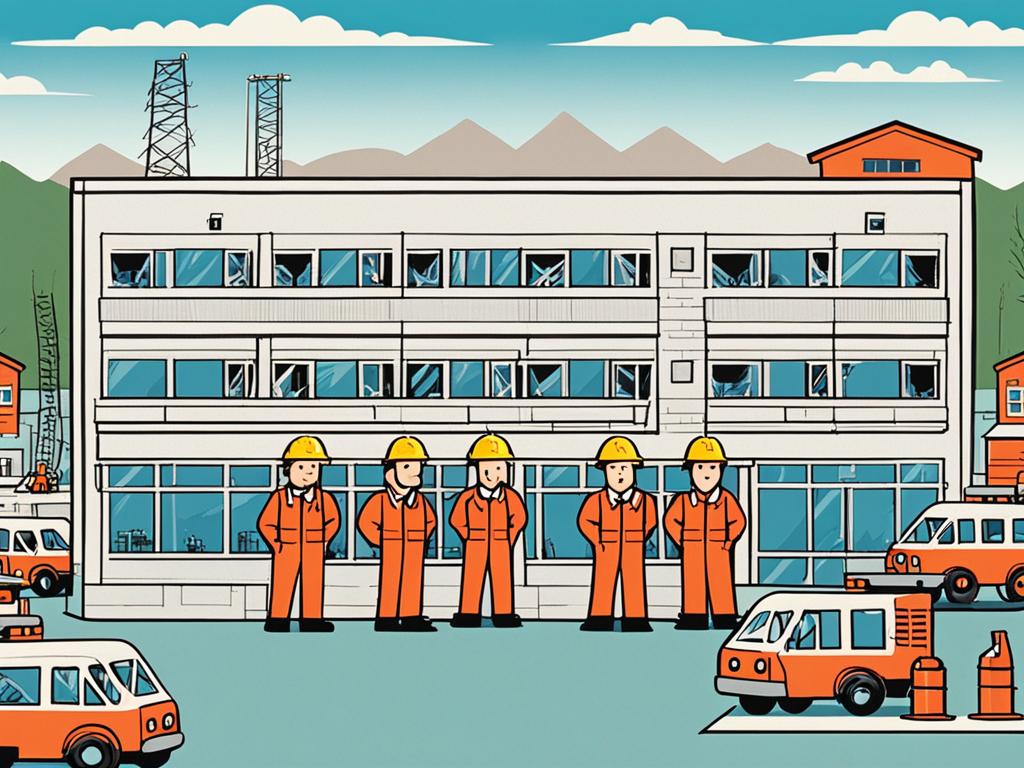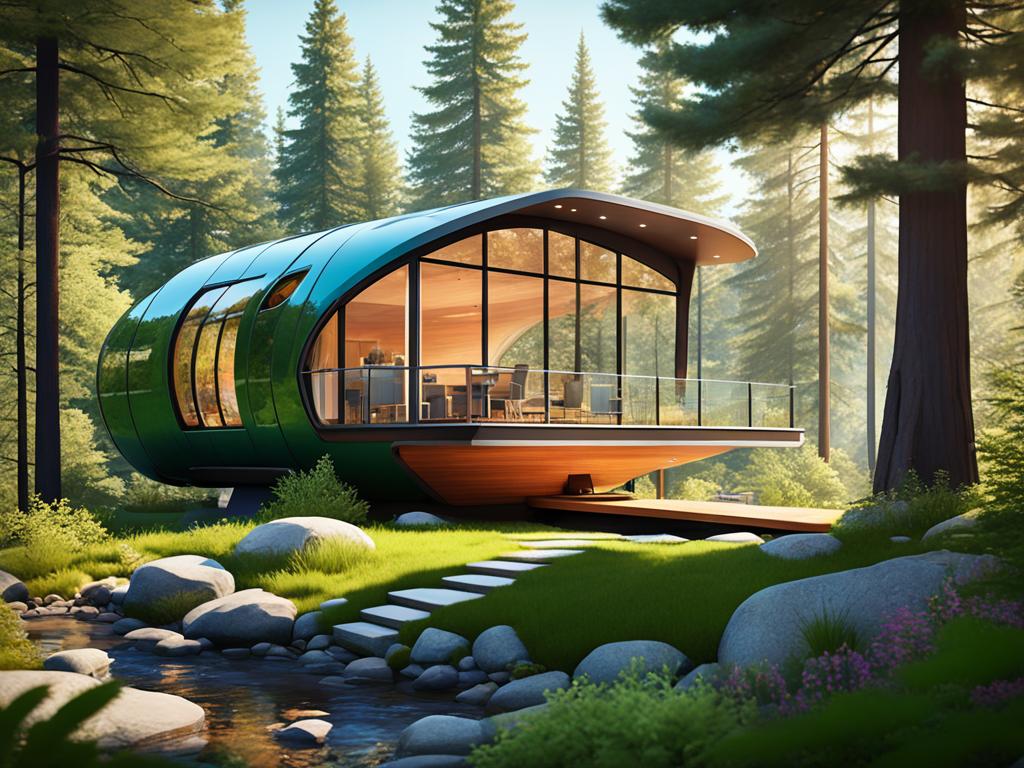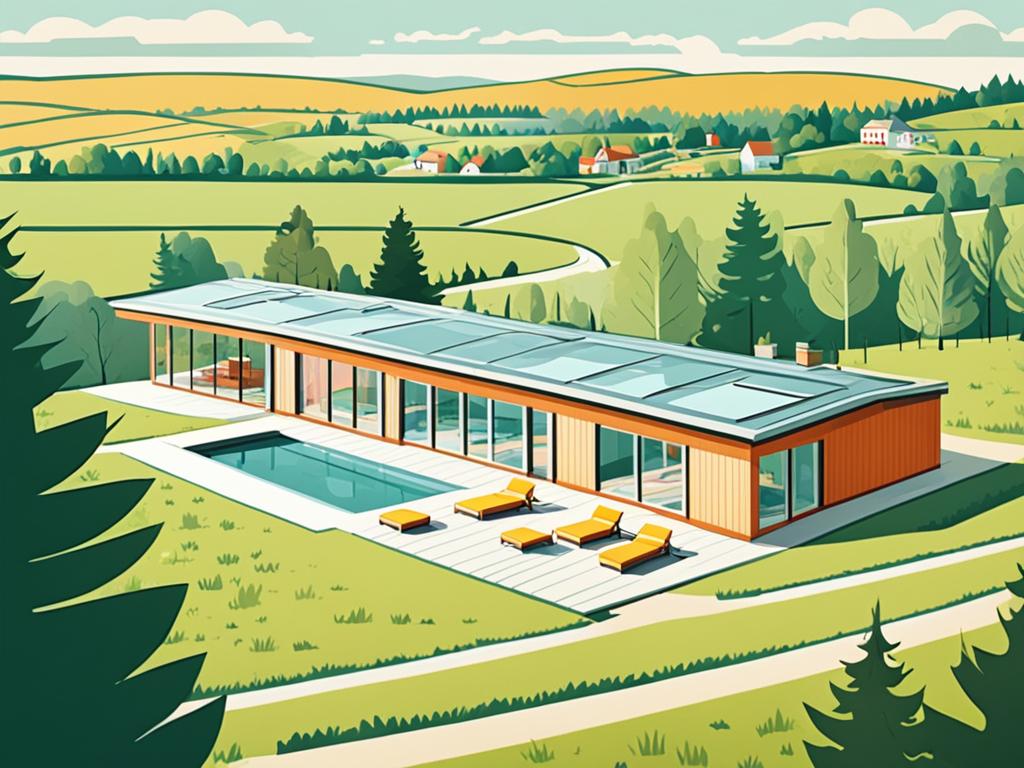Welcome to our article on prefab houses, also known as prefabricated homes. Prefab houses are modern and efficient housing structures that are manufactured off-site and then transported to the final construction site for assembly. These homes offer speedy construction and are a cost-effective solution for affordable housing in the UK.
Key Takeaways:
- Prefab houses, also known as prefabricated homes, are modern and efficient housing structures.
- They are manufactured off-site and then transported to the final construction site for assembly.
- Prefab houses offer speedy construction and are a cost-effective solution for affordable housing in the UK.
- Advancements in technology and construction methods have made prefab houses more popular than ever.
- Prefab houses provide opportunities for customization and sustainable living.
History of Prefabricated Homes
Prefabricated homes have a long and fascinating history that dates back to the 12th century. The concept of building components off-site and assembling them on-site was mentioned for the first time during this period.
In the early 1900s, companies like Sears Catalog Homes played a significant role in popularizing mail-order kit homes in the United States. These homes allowed customers to customise their floor plans and choose from a range of styles and designs.
In the United Kingdom, prefabricated homes gained popularity after World War II as a temporary solution to the housing shortage caused by bomb destruction. These post-war prefab homes were mass-produced and quickly assembled to provide temporary housing for the displaced population.
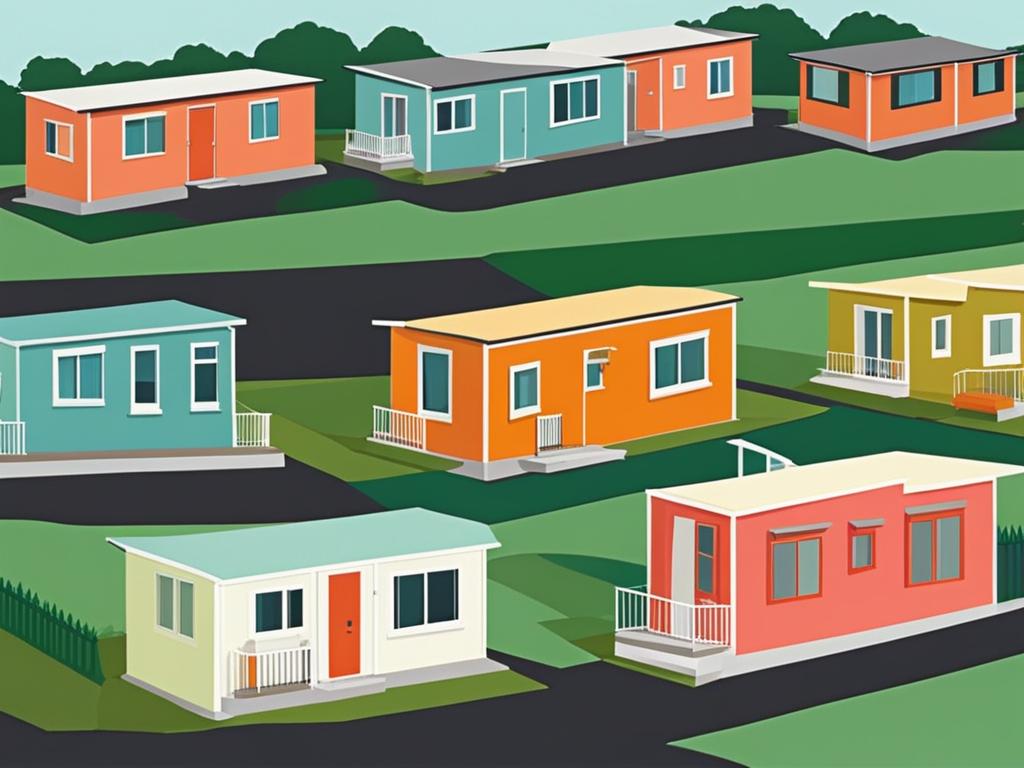
However, these early prefab homes were often criticised for their low quality and were expected to serve as short-term accommodations. They were designed to quickly meet the high-volume housing demands during that period, but they were not intended to be permanent solutions.
Types of Prefabricated Homes
When it comes to prefabricated homes, there are several different options available to suit individual preferences and requirements. Let’s explore the various types:
Modular Homes
Modular homes are constructed in sections within a factory setting. These sections, or modules, are then transported to the final construction site where they are assembled to create a complete home. Modular homes offer a high level of customisation and flexibility, allowing homeowners to create their ideal living spaces with custom floor plans and designs.
Manufactured Homes
Manufactured homes, also known as mobile homes, are fully constructed in a factory and then transported to the site as a complete unit. These homes are built to comply with national building codes and standards. Manufactured homes offer a quick and convenient housing solution, with a range of design options available to buyers.
Kit Homes
Kit homes come as pre-cut pieces that can be easily assembled on-site by the homeowner. These homes are delivered in kit form, complete with all the necessary materials and instructions for construction. Kit homes allow for greater involvement in the building process and offer the opportunity to save costs by providing labor for the assembly.
No matter which type of prefabricated home you choose, one of the key advantages is the ability to customise the floor plans to meet your individual needs and preferences. This allows you to create a home that perfectly matches your lifestyle and unique requirements.
Advantages of Prefab Homes
Prefab homes offer several advantages that make them a compelling choice for homeowners in the United Kingdom. Here are some key benefits of opting for prefab homes:
- Affordability: One of the major advantages of prefab homes is their affordability. These homes are often more cost-effective than traditional stick-built homes, with potential savings of up to 25%. The streamlined manufacturing process and reduced construction time contribute to lower overall costs, making prefab homes a great option for those looking for affordable housing solutions in the UK.
- Sustainability: Another notable advantage of prefab homes is their sustainability. With increasing environmental concerns, prefab homes offer a greener alternative. These homes are built using sustainable materials and construction methods, reducing their carbon footprint. Additionally, their energy-efficient design, tighter seams, and better insulation contribute to lower energy consumption and reduced utility bills.
- Quicker Construction: Prefab homes are known for their faster construction process compared to traditional homes. Since the components are manufactured off-site in a controlled factory environment, construction time is significantly reduced. This means homeowners can move into their new prefab homes in a shorter period, saving time and avoiding lengthy construction delays.
- Quality Control: Prefabrication allows for better quality control as each component is precisely manufactured in a controlled environment. This results in greater consistency and accuracy in the construction process, ensuring a higher level of quality in the finished home. With strict quality checks and supervision at every stage, prefab homes offer improved assurance of structural integrity and overall build quality.
To further illustrate the advantages of prefab homes, take a look at the following image:
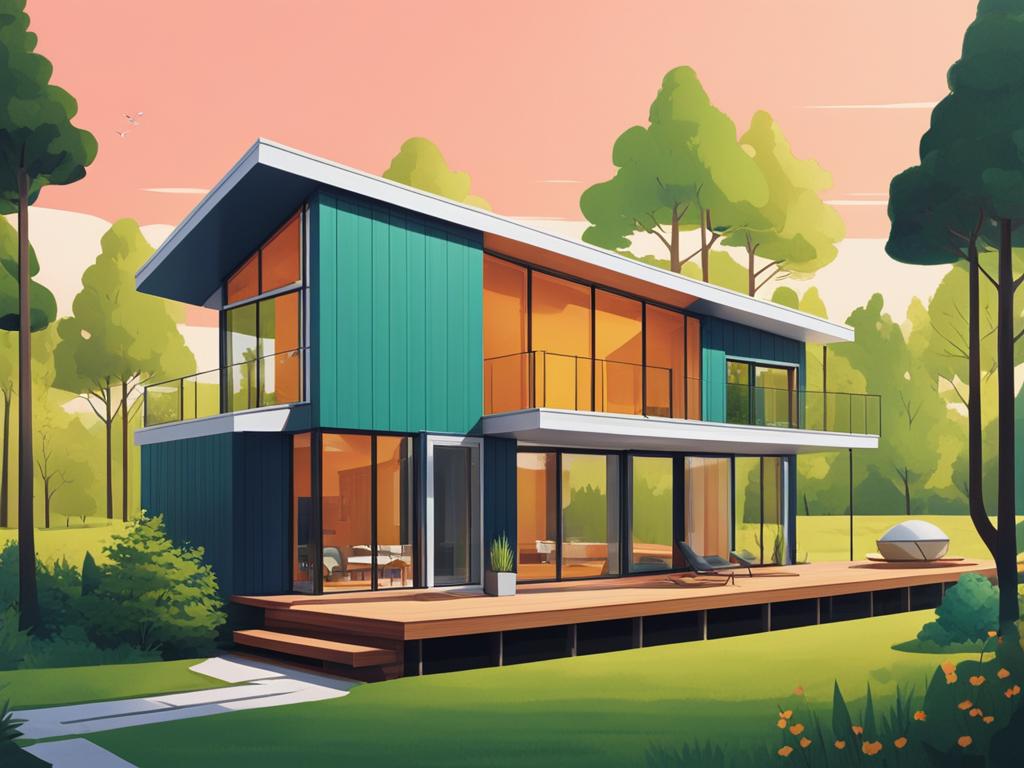
With these advantages in mind, it’s clear that prefab homes offer a compelling solution for those seeking affordable, sustainable, energy-efficient homes with quicker construction timelines and superior quality control.
Challenges and Limitations of Prefab Homes
Prefab homes offer numerous advantages, such as affordability, sustainability, and quicker construction. However, they also come with some challenges and limitations that homeowners need to consider.
Building Permits and Adherence to Building Codes
One of the challenges of prefab homes is obtaining the necessary building permits and complying with building codes and zoning laws. Just like traditional homes, prefab homes must meet all the legal requirements and regulations set by local authorities. Homeowners need to ensure that their prefab home plans and designs comply with these standards before they begin construction.
Setting Up Utilities
Setting up utilities for prefab homes can be challenging, especially on uneven or remote sites. Homeowners may face difficulties in connecting their homes to water, electricity, and sewage systems, particularly in areas where infrastructure is limited. Proper planning and coordination with utility companies are essential to overcome these challenges and ensure that the home has access to necessary services.
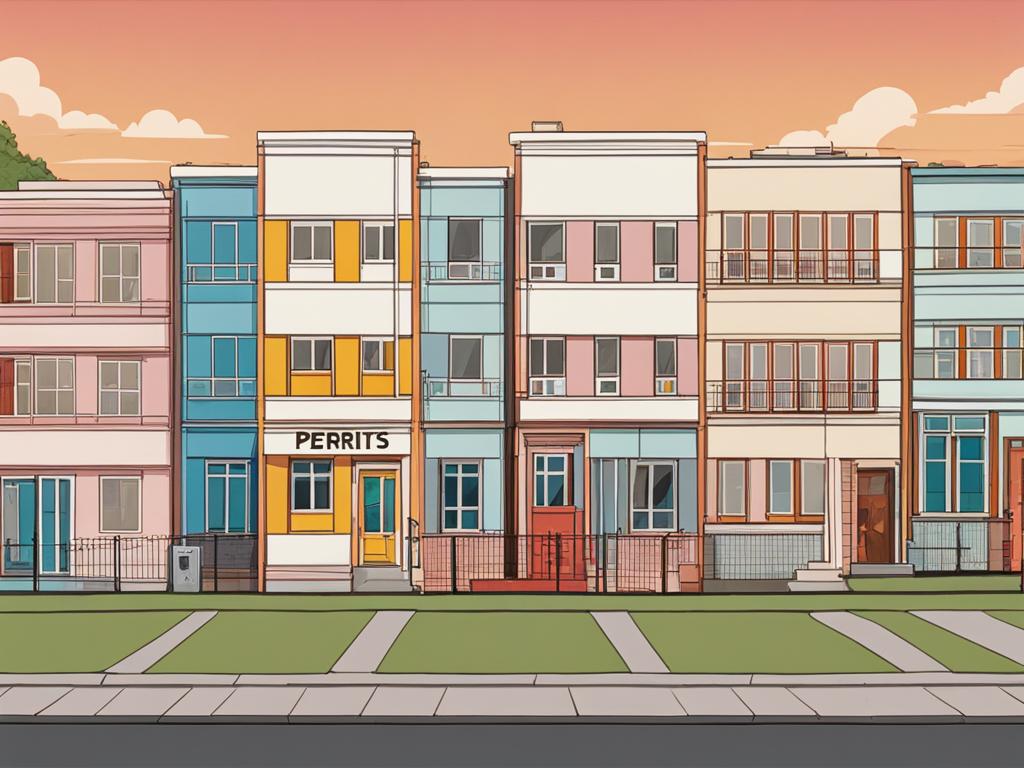
Upfront Costs
Building a prefab home involves upfront costs that homeowners need to consider. In addition to purchasing the land, there are additional fees for building permits, utility hookups, and any site preparation work that may be required. These costs can vary depending on the location and complexity of the project. It’s important for homeowners to budget accordingly to cover these expenses.
Financing Challenges
Obtaining financing for prefab homes can be more challenging compared to traditional home construction. Lenders may have specific requirements and criteria for providing loans for prefab homes. Homeowners may need to explore different financing options, such as construction loans or chattel mortgages, to secure the necessary funds. Working with a lender who specializes in prefab home financing can help simplify the process.
Despite these challenges and limitations, prefab homes continue to gain popularity as a practical and sustainable housing option. With proper planning, research, and coordination, homeowners can overcome these hurdles and enjoy the many benefits that prefab homes offer.
Financing Options for Prefab Homes
When considering the purchase of a prefab home, it’s essential to explore the various financing options available. Two common financing options for prefab homes are construction loans and chattel mortgages.
- A construction loan is a type of short-term loan that covers the upfront cost of construction. It provides the necessary funds to build your prefab home, including the purchase of materials and payment to contractors. Once construction is complete, the loan transitions into a permanent mortgage, allowing you to repay the borrowed amount over an extended period.
- A chattel mortgage is another option for financing prefab homes. This type of loan is often used when the home is placed on leased land. The prefabricated home itself serves as collateral for the loan. It’s important to note that chattel mortgages may have slightly different terms and requirements compared to traditional mortgages.
If you’re looking for a financing solution for a manufactured home that is permanently attached to land as real property, Rocket Mortgage offers customizable loan options that suit your needs. Whether you’re constructing a modular or manufactured prefab home, Rocket Mortgage can provide expert guidance and competitive rates.
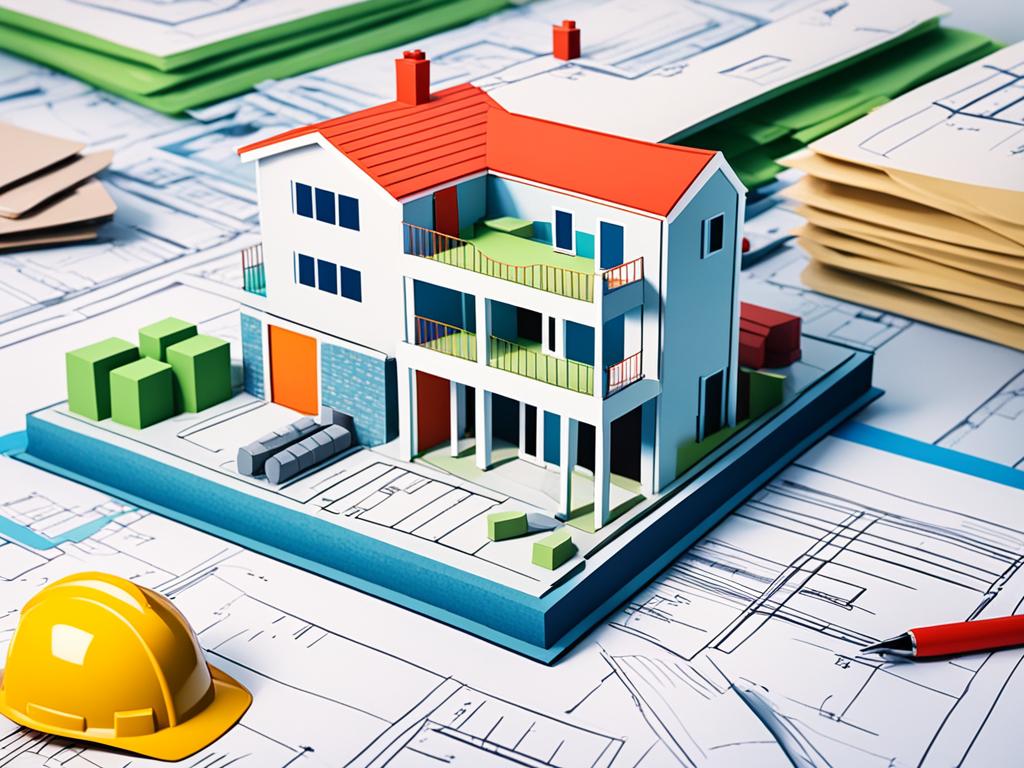
With these financing options, you can make owning a prefab home a reality. However, it’s always advisable to consult with financial professionals and understand the terms and conditions of any loan before making a commitment.
Conclusion
Prefab homes have evolved significantly from their humble beginnings as temporary shelters. Today, they offer a practical and sustainable solution for affordable housing in the UK. Thanks to advancements in technology and construction methods, prefab homes have gained popularity for their affordability, energy-efficiency, and quality control.
As the future of housing, prefab homes provide an opportunity for individuals and families to own a comfortable and eco-friendly home at a fraction of the cost of traditional construction. The modular nature of these homes allows for efficient manufacturing and faster assembly, saving both time and money.
While there are challenges associated with prefab homes, such as obtaining permits and setting up utilities, financing options are available to help aspiring homeowners fulfill their dream of owning a prefab home. With financial solutions like construction loans and chattel mortgages, individuals can overcome the initial upfront costs and secure the necessary funding.
As the need for affordable housing continues to grow, prefab homes offer a promising solution that combines affordability, sustainability, and quality. With their modern designs and customizable floor plans, prefab homes provide a unique opportunity for individuals to own a home that aligns with their lifestyle and values. The future of housing in the UK is embracing prefab homes, bringing sustainable and affordable living within reach for many.
FAQ
What are prefab houses?
Prefab houses, also known as prefabricated homes, are housing structures that are manufactured off-site and transported to the final construction site for assembly.
How long have prefab houses been around?
The concept of prefab houses dates back to the 12th century, and they gained popularity in the UK after World War II as a temporary housing solution.
What are the different types of prefab homes?
There are modular homes, which are built in sections and assembled on-site, manufactured homes that are fully constructed in the factory and transported as a complete unit, and kit homes that come as pre-cut pieces for on-site assembly.
What are the advantages of prefab homes?
Prefab homes are often more affordable than traditional stick-built homes, offer better quality control, are energy-efficient, and have quicker construction times.
What challenges and limitations do prefab homes have?
Homeowners need to obtain building permits and adhere to building codes and zoning laws. Setting up utilities can be challenging, and upfront costs, including land purchase and permits, are required. Financing can also be more difficult to obtain.
What financing options are available for prefab homes?
Construction loans and chattel mortgages are common financing options. Construction-to-permanent loans cover the construction costs and transition into a mortgage, while chattel mortgages are used for homes on leased land.


